Playground Surface Testing
Falls on playgrounds cause 75% of playground accidents. It makes sense, playground equipment gives kids the opportunity to climb and test their abilities. Some times they find they were moving too fast or the apparatus was a bit too challenging for their skill level. For this reason ASTM (American Standard for Testing and Materials) requires that playgrounds are surrounded by impact attenuating surfacing. Impact attenuating surfaces are soft and help absorb some of the energy from the fall.
Hang with me as I get a bit technical here. This is a description of ASTM F1292.
This specification specifies impact attenuation performance requirements for playground surfaces and surfacing materials and provides a means of determining impact attenuation performance using a test method that simulates the impact of a child’s head with the surface. The test method quantifies impact in terms of g-max and Head Injury Criterion (HIC) scores. G-max is the measure of the maximum acceleration (shock) produced by an impact. The Head Injury Criterion or HIC score is an empirical measure of impact severity based on published research describing the relationship between the magnitude and duration of impact accelerations and the risk of head trauma.
You may ask how in the world would I test that? With this handy little machine called the Triax. Thanks to Northwest Playgrounds I was able to see this in action on a few different sites with different types of playground materials. We tested a variety of surfacing including: three types of playground tiles, engineered wood fiber, poured in place rubber, SMARTE and playground turf.
The tripod is set up and the weight is hung from the middle. The weight is set to the critical fall height for the equipment which is usually the height of the tallest deck. There is a remote that releases the weight to drop to the surface. Then the HIC and g-max are recorded. Here is a little video clip of the Triax in action.
.
Here is what I learned:
– Kids loved this! It would be a great science lesson for students. They were interested in the safety, equipment and the process of the testing.
– Surfacing gets old and gets harder with age. It is a good idea to retest your impact attenuation regularly.
– Chips seem to be great protection for falls if they can be maintained. In our test chips to the side of equipment has some of the best ratings. Chips at the bottom of the slide had some of the worst. Remember to get out there and rake your chips!
– Look for surfacing that offers a warranty of fall protection over time. For example Softile.
– I still like the recycled content and re-usability of the SMARTE surfacing. It is relatively new on the market and I look forward to seeing more installations of it. See this video for a step by step installation demo.
http://www.youtube.com/watch?v=qPjEDgI6sDw
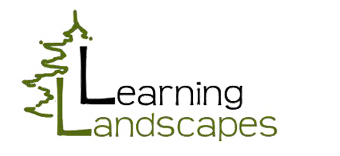

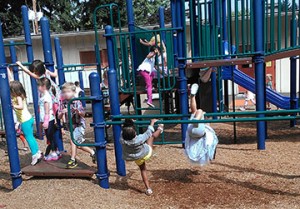
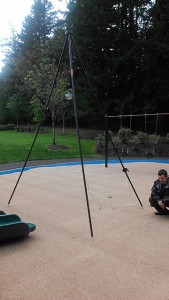
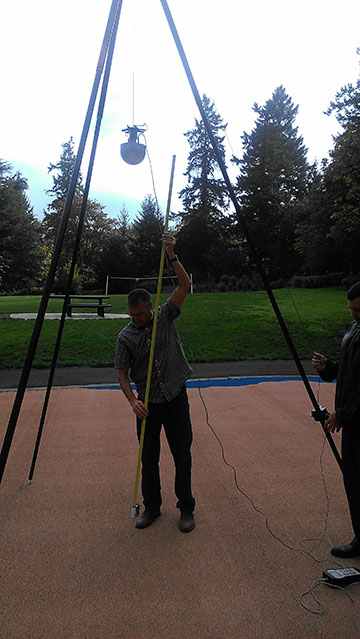
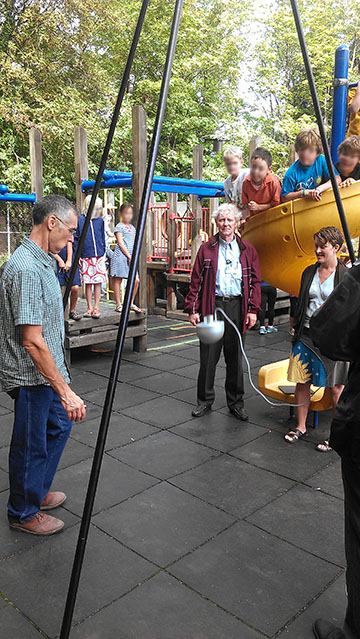
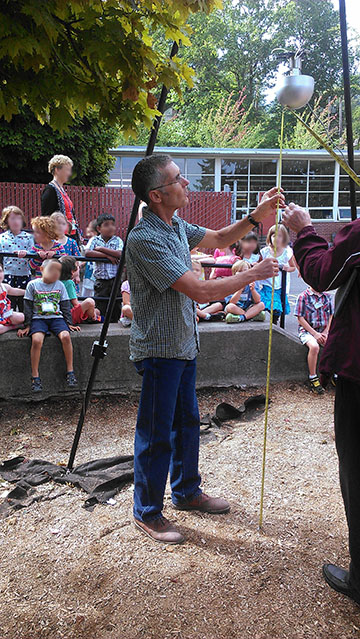

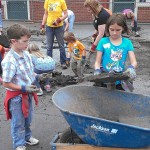
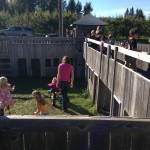
thank your for your information! It’s great!!! I’m so happy you mentioned Smarte by name!
Elaine should be thrilled.
thank you.